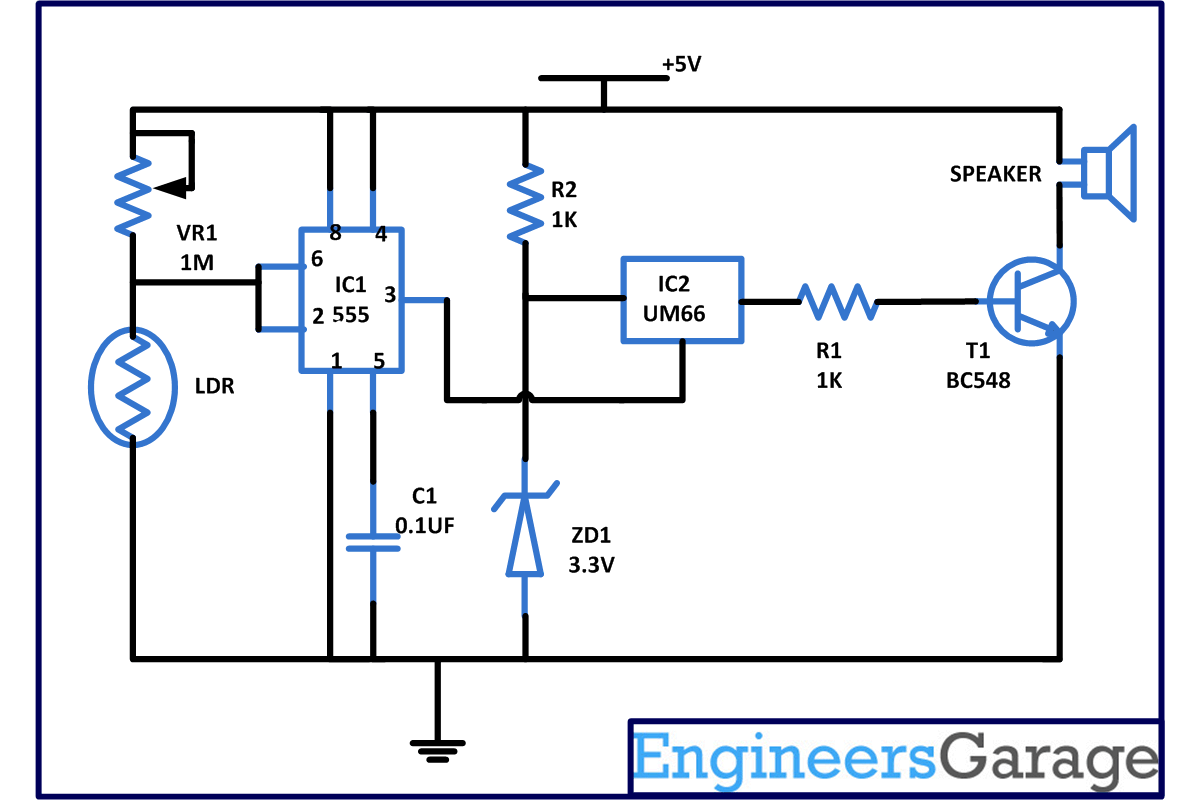● Magic eye can be used as automatic guest indicator in your home. Just install this at the bottom of the door and whenever a person comes at door its shadow will fall on light dependent resistor and will ring the bell. Giving you an indication that somebody is present on the door without the knowledge of the visitor.
● It can also used as a prevention measure against vandalism. So, apart from homes, it can also be used shop and banks.
● So this magic eye circuit can be worked as automatic door bell plus thief alarm.
[[wysiwyg_imageupload:10876:]]
Fig. 1: Prototype of Magic Eye using 555 Timer IC Circuit on Breadboard
This circuit is based on a LDR which act as a sensor to detect the shadow; NE555 is a timer IC and UM66 which is used as melody generator IC.
Circuit Diagrams
Project Components
Project Video
Filed Under: Electronic Projects
Filed Under: Electronic Projects



Questions related to this article?
👉Ask and discuss on Electro-Tech-Online.com and EDAboard.com forums.
Tell Us What You Think!!
You must be logged in to post a comment.